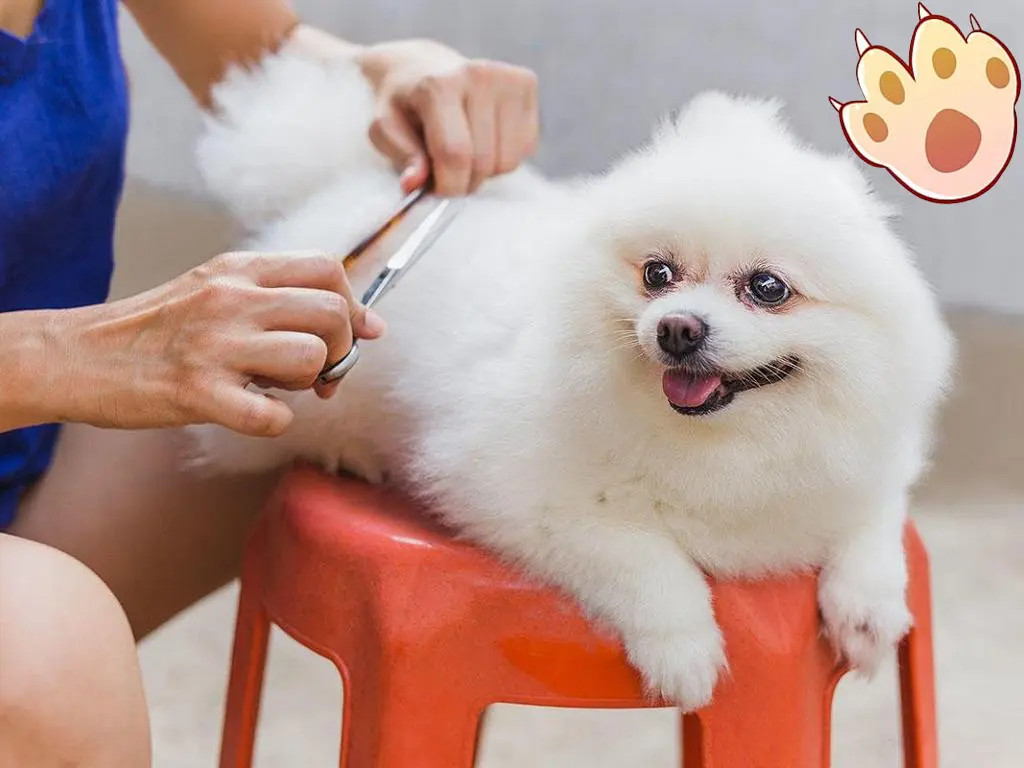
Dogs need grooming just like humans do. Because grooming will not only keep your dog looking good and smelling nice, but also prevent painful and expensive health problems with regular care of your dog’s coat, ears, nails and teeth. In fact, many dog owners choose professional groomers, while, this can be expensive, and qualified groomers may not always be available in your area. But if you have engough patience, and practice grooming with plenty of treats and praise, you can peform well at home. In this, article, there displays the time for your puppy’s first grooming, the grooming tools you need, the requency of grooming that your dog need, and the detailed processes about how to grom.
This video is owned by the original creator on YouTube and is embedded in compliance with YouTube's Terms of Service. Our website provides independent commentary and analysis.
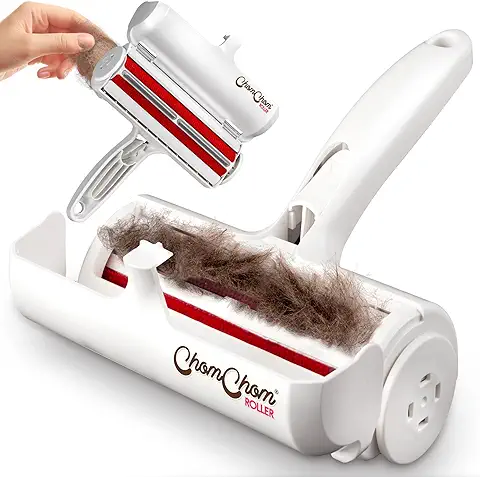 Check this grooming tool on Amazon
Check this grooming tool on Amazon
This post contains affiliate links. We may earn a small commission if you purchase through these links, at no extra cost to you.
1.When Can a Puppy Get Groomed for the First Time?
Dog owners should make their dogs be used to regular grooming as early as possible, best whey they are puppies. For dogs, no matter grooming at home or by a professional dog groomer, it’s a happy and comfortable process. By grooming your dog regularly, it also gets them used to the handling style and makes trips to the vet easier.
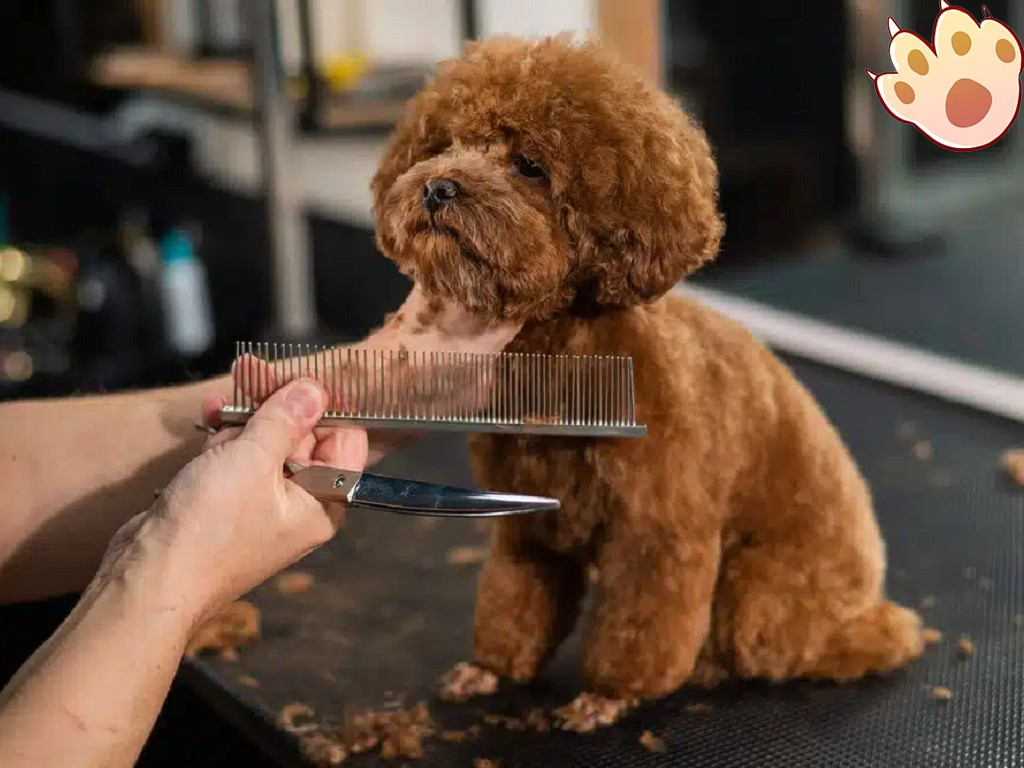
2.What Grooming Tools Do I Need?
• Nail clippers (designed for dogs)
• Rubber-bristle brush, wire slicker brush, metal comb, and/or a de-shedding tool
• Styptic pencil (for accidental bleeding)
• Toothbrush and toothpaste (sdesigned for dogs)
• Cotton balls and/or soft, reusable cloth squares
• Rounded-tip shears and/or a small clipper equipped with guide combs
• Shampoo (specifically for dogs) and conditioner (optional, specifically for dogs)
• Microfiber towel
• Hair dryer (optional)
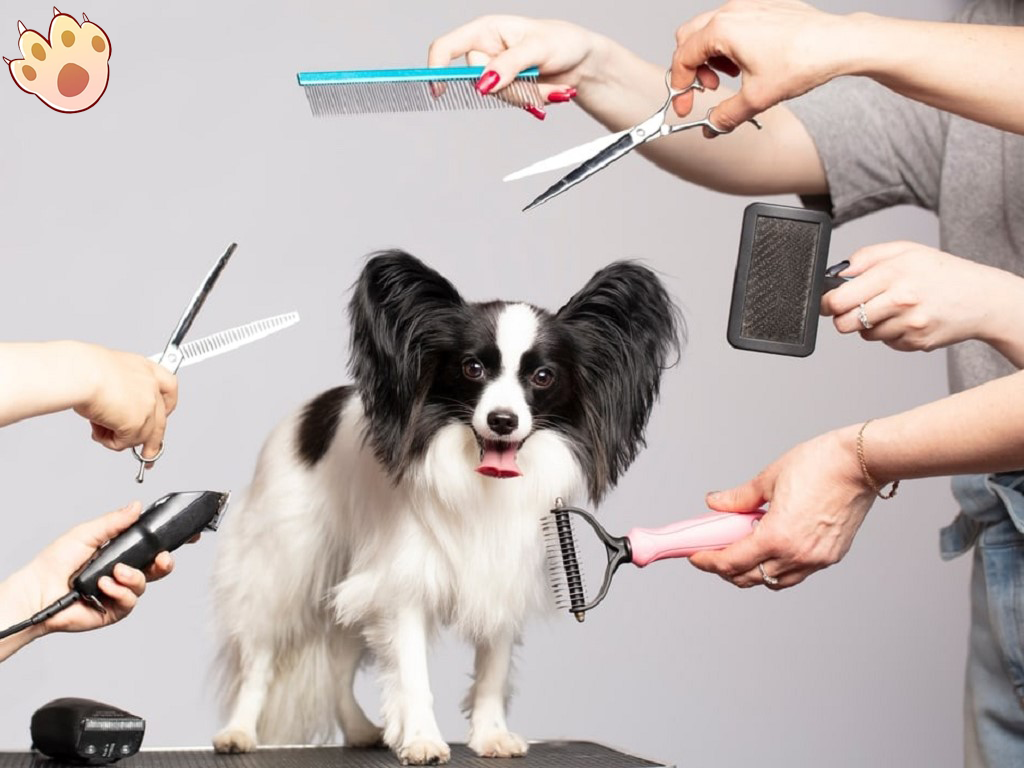
 Check this grooming tool on Amazon
Check this grooming tool on Amazon
This post contains affiliate links. We may earn a small commission if you purchase through these links, at no extra cost to you.
3.How Often Does My Dog Need Grooming?
Short-haired, smooth-coated dogs should be groomed at least once per week. For rough or long-coated dogs, they need not only much more regular grooming, also need regular trimming to keep the fur at a manageable length. Trimming frequency is usually every 4 to 12 weeks, with regular (usually daily) combing and cleaning required in between.
However, for terrier breeds and some other breeds, they may need ‘stripping' instead of regular grooming to remove dead hairs, because they don’t shed as effectively as other breeds.
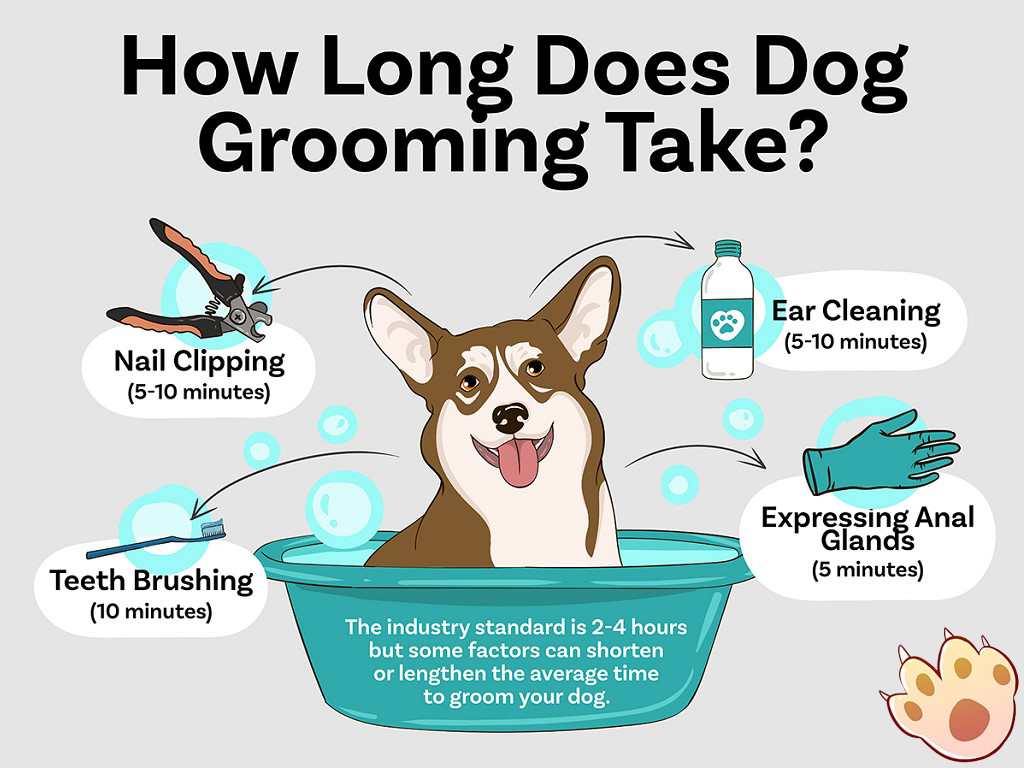
4.How to Groom a Dog?
4.1Comb out Your Dog First
Usually, a completely combing should always be the first step of the grooming process, becasue combing can detangle the fur and prevent painful pulling during brushing or bathing. Therefore, to prevent your dogs’ hair from getting tangled, combing your dogs’ coat daily or every other day is important. When you comb out your dogs, you can start from the head and move down the body. You need to take extra care when combing under the belly, as it’s a sensitive area, and be sure not to overlook the tail.
And once you find a tangle when you are combing, you need to gently work through the tangle with your fingers, and you can use a detangling spray if needed. Remember, avoid pulling, as it can hurt your dog or damage the coat. And you can choose different tools for different dog breeds. For example, you can brush short-haired dogs with simple tools like curry brushes or gloves. While, for medium- to long-coated dogs, you need more specialized tools like a steel a pin brush, slicker, comb, or an undercoat rake.
No matter what tool you choose, it should effectively remove loose hair and spread the skin’s natural oils evenly through the coat.
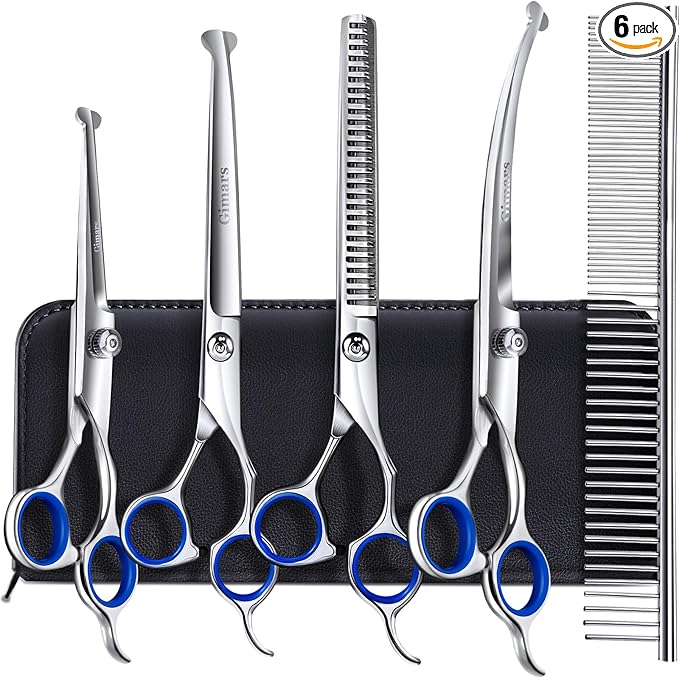 Check this grooming tool on Amazon
Check this grooming tool on Amazon
This post contains affiliate links. We may earn a small commission if you purchase through these links, at no extra cost to you.
4.2Bathe Your Puppy
Once you thoroughly comb out your dogs, you can bathe them. In dalily life, Your dog should be bathed regularly, but not too often, with the frequency depending on their breed and coat type. Because too-frequent bathes will remove natural oils, and lead to dogs’ coat dry and harsh.
During bathing, a mild shampoo designed for dogs is necessary. Firstly, place your dog in a tub or basin, insert cotton balls into their ears, and add a few drops of mineral oil to their eyes. Secondly, use warm water to wet your dog, then apply
shampoo starting at the neck and working your way down the body. Thirdly, rinse your dog thoroughly with warm water after lathering and scrubbing. Lastly, Towel-dry your dog thoroughly with firm rubbing, and use a blow dryer if needed.
4.3Trim Your Puppy’s Nails
It seems a daunting task for trimming puppy nails. Because if you do accidentally cut the quick on dog feet, it will cause bleeding. The quick is the vein that extends about halfway through the nail; in dogs with lighter nails, it often appears as a light pink section in the center. And if you accidentally make a mistake, apply styptic powder to stop the bleeding.
In addition, if your puppies regularly on hard surfaces such as sidewalks, they do not need to trim nails.
You can trim your puppies’ nails for the first time after they are weaned or brought home. But first, get them used to having their paws, toes, and nails handled. Be sure to give praise and treats during the trimming process so that it is a positive experience.
After you know some points before trimming puppies’ nails, you still have problems about how to cut puppy nails. Firstly, firmly holdina nail of puppy between your fingers. Secondly, using a clipper which is especially for dog, trim off a small amount from the tip of the nail. Thirdly, giving your puppy a lot of praise and treats to keep them happy and clam. Lastly, repeating the process for each nail until completion.
4.4Clear The Dog's Eyes
When grooming your dogs, clearing their eyes is an important process. And different dog breeds may have different degrees of difficulty in cleaning their eyes. For white-haired breeds or those with large eyes that water a lot, such as Pekingese, Pugs, Shih Tzus, etc, may need more maintenance than others. While, for dogs which have tight eyelids, minimal facial folds, or no excessive tear staining issues, they just need to wipe away debris or discharge from the corners of the eyes. Such as Labrador Retriever, Golden Retriever, Beagle, etc.
In fact, if a dog is healthy, its eyes will be bright and clear, with no signs of redness or abnormal discharge.
4.5Clean Your Dog's Ears
As we all know, cleaning dog’s ears not only can prevent ear infections, remove dirt and buildup, reduces odor, but also can help dog owners spot dog ears’ problems early. Therefore, if your dogs are prone to ear problems, you need to clean their ears once a month or more often.
During ear cleaning, you need to examine the inner ear and sniff gently to detect any abnormal smells. If you spot any signs such as severe redness, debris, brown or yellow discharge, swelling, a fetid, “yeasty” odor, you need to visit your veterinarian. Because these signs always mean your dog may have an ear infection. And you can easily find these signs after a bath or swimming due to the accumulation of moisture. You just need to clean the outer part of the ear , using a damp cloth or a cotton ball soaked in mineral oil. Never force anything into the ear.
4.6Brush Your Puppy’s Teeth
For dogs, brushing teeth is a crucial part of their overall health care. Brushing dog’s teeth not only prevents dental disease, fights bad breath, but also protects internal organs. Therefore, you need to get your dogs used to brushing teeth as soon as possible. You can brush your puppy’s teeth at around six months of age.
When you are brushing dogs’ teeth, you should take a gentle approach. Start rubbing your finger around your puppy's mouth to let them try out puppy-friendly toothpaste. Next, use a toothbrush that is designed for dog to clean each teeth.
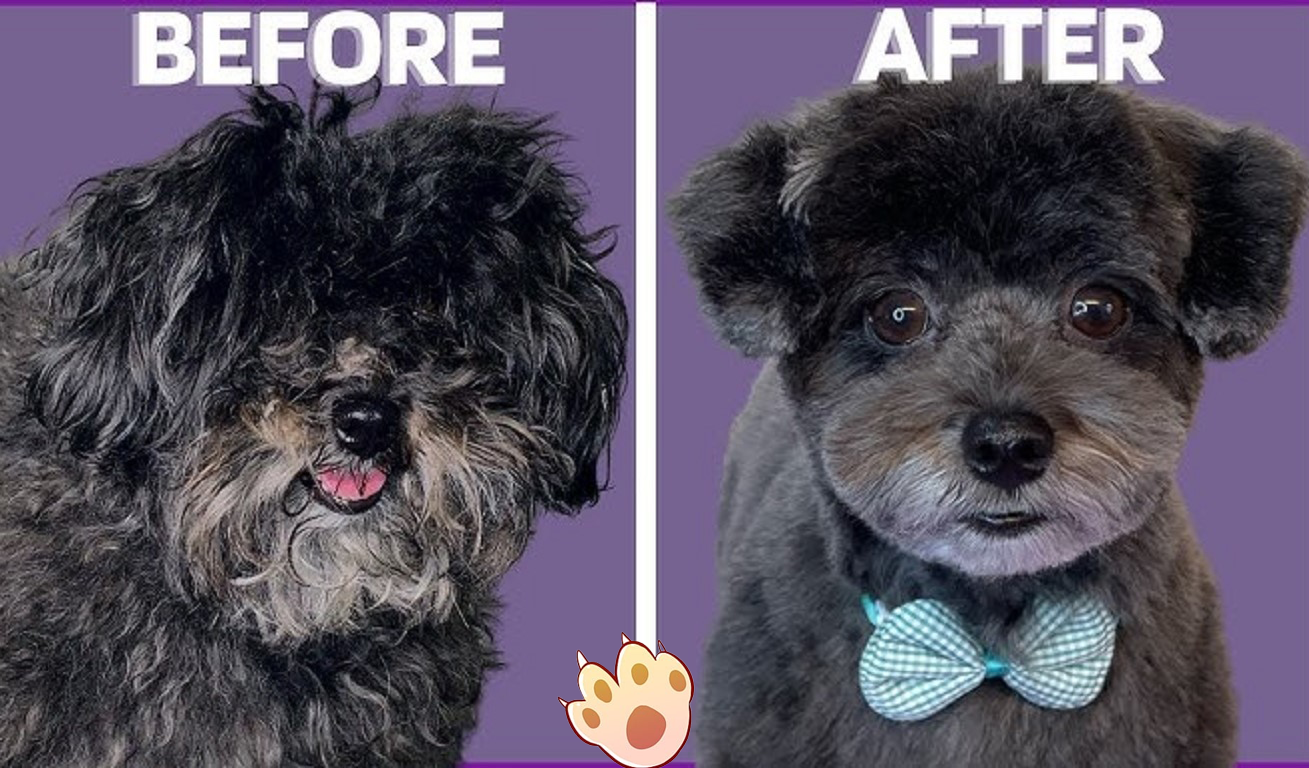
Regular grooing is more than just keeping your dog looking clean and cute—it plays a vital role in their overall health and well-being. It not only can maintain healthy skin and coat, spot health issues early, keep nails trimmed and feet healthy, prevents ear infections, but also can supports oral health, reduces shedding and allergens and strengthens the bond.
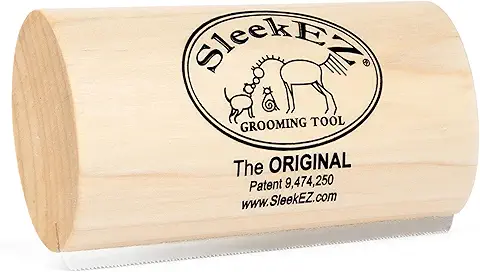 Check this grooming tool on Amazon
Check this grooming tool on Amazon
This post contains affiliate links. We may earn a small commission if you purchase through these links, at no extra cost to you.
2018-2025 © PupsLover.All Rights Reserved.